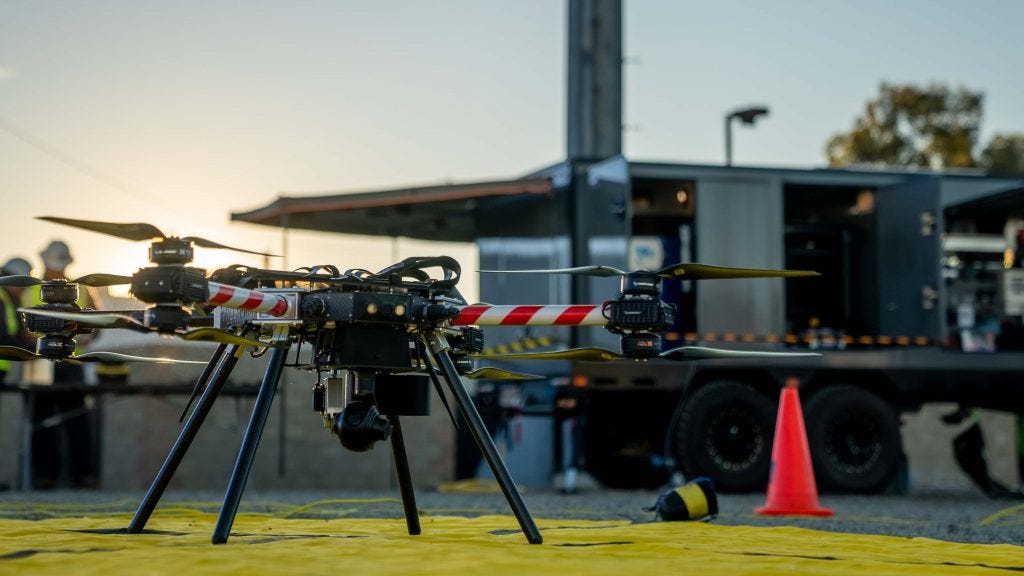Some fun robot math
Charts of the week
In my last post on the future of climate tech, I shared my growing fascination with robotics. I’ve become increasingly bullish on robots as a category. Over the past decade, all of the most important inputs for a robot have become much cheaper, while simultaneously making steady progress on key performance metrics. (For example: energy density for batteries; energy efficiency for GPUs; resolution for LiDAR sensors… and whatever metric you want to use for “intelligence” when it comes to AI.)
These are the kinds of numbers that tend to herald the beginning of a super-cycle.
Currently, robots appear to be evolving in much the same manner as living organisms, giving rise to a beautifully diverse panoply of robotic form factors best suited for performing specific sets of tasks. For example, at Energy Impact Partners, we invested in Infravision, whose robotic product takes the familiar form of a “quadcopter” drone… but tethered to a highly specialized ground system for stringing electric conductor.
On the other hand, there are also believers in the vision of a much more humanoid-dominant robot future. See: Tesla and Figure, which raised $675m at a $2.6b valuation back in February of this year. The idea here is that most human spaces and human jobs are designed for human-shaped workers… so “human-shaped” is naturally the most versatile form factor.
I’m still not convinced humanoids are the way to go, but I’m intrigued, so I thought I’d crunch some high-level numbers on humanoid robots.
First, mostly just for fun, energy efficiency:
Figure has reported that its second generation robot has a 2.25 kWh battery, which provides about 5 hours of power. Comparing this to a typical human metabolism of around 770 Btu per hour (when performing hard labor), it’s clear that humans still retain at least one advantage over our robotic substitutes. When it comes to energy efficiency, wetware still beats hardware!
On the other hand, robots are almost certainly going to be cheaper — probably much cheaper. The chart above is making what I believe to be fairly reasonable medium-term assumptions about the capex, lifetime, energy cost, and utilization rate of a high-quality, humanoid robot.
Best of luck, fellow “meat” humans!






